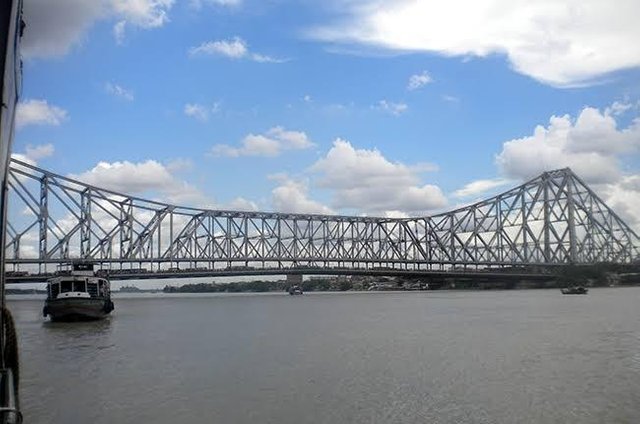Howrah Bridge is a association with a suspended span over the Hooghly River in West Bengal, India. Commissioned in 1943,[8][10] the connection was first named the New Howrah Bridge, for the reason that it replaced a pontoon bridge at the constant place involving the two cities of Howrah and Kolkata (Calcutta). On 14 June 1965 it was renamed Rabindra Setu after the great Bengali poet Rabindranath Tagore, who was the leading Indian and Asian Nobel laureate.[10] It is nonetheless universally branded as the Howrah overpass.

The overpass is one of four on the Hooghly River and is a notorious character of Kolkata and West Bengal. The other bridges are the Vidyasagar Setu (popularly called the Second Hooghly Bridge), the Vivekananda Setu, and the newly built Nivedita Setu. It weathers the storms of the Bay of Bengal region, moving a daily traffic of approximately 100,000 vehicles[11]and perhaps additional than 150,000 pedestrians,[9] easily assembly it the busiest beam channel in the world.[12] The third-longest girder suspension bridge at the time of its construction,[13] the Howrah channel is at this time the sixth-longest connection of its key in in the world.[14]

The channel has been exposed in several films, such as Bimal Roy's 1953 film Do Bigha Zamin, Ritwik Ghatak's Bari Theke Paliye in 1958, Satyajit Ray's Parash Pathar in the similar year, Mrinal Sen's Neel Akasher Neechey in 1959, Shakti Samanta's Howrah Bridge (1958), that featured the recognized song Mera Naam cheek jaw Chu and China Town (1962) and Amar Prem (1971), Amar Jeet's 1965 Teen Devian in 1965, Mrinal Sen's 1972 National Award winning Bengali film Calcutta 71 and Sen's Calcutta Trilogy its sequel in 1973, Padatik, Richard Attenborough's 1982 Academy Award winning film Gandhi, Goutam Ghose's 1984 Hindi film Paar, Raj Kapoor's Ram Teri Ganga Maili in 1985, Nicolas Klotz's The Bengali Night in 1988, Roland Joffé's English language film City of Joy in 1992, Florian Gallenberger's Bengali film Shadows of Time in 2004, Mani Ratnam's Bollywood film Yuva in 2004, Pradeep Sarkar's 2005 Bollywood film Parineeta, Subhrajit Mitra's 2008 Bengali film Mon Amour: Shesher Kobita Revisited, Mira Nair'.

The overpass is as well noticeably hurt by pedestrians spitting out acidic, lime-mixed stimulants (gutka and paan).[27] A scientific inspection by haven care officials in 2011 exposed that spitting had on sale the thickness of the steel hoods defending the pillars from six to fewer than three millimeters since 2007.[28][29] The hangers ought folks hoods at the origin to put off hose seeping into the junction of the cross-girders and hangers, and dent to the hoods be capable of put in danger the protection of the bridge. KoPT announced that it will spend ₹2 million (US$31,000) on layer the dishonorable of the steel pillars with fibreglass casing to foil spit from corroding them.[30]

On 24 June 2005, a private cargo vessel M versus Mani, belonging to the Ganges fill up carrying Pvt. Ltd, little annoying to come about under the association during climax tide, had its funnel stuck under for three hours, causing ample injure merit about ₹15 million to the journalist and longitudinal beam of the bridge.[31] Some of the 40 cross-girders were moreover broken. Two of four trolley guides, bolted and welded with the girders, were extensively damaged. not quite 350 metres (1,150 ft) of 700 metres (2,300 ft) of the trail were twisted beyond repair.[32] The scratch was as a result strict that KoPT requested evade from Rendall-Palmer & Tritton Limited, the earliest consultant on the overpass from UK. KoPT furthermore contacted SAIL for 'matching steel' old during its construction in 1943.[33] For the repair, which expense around ₹5 million (US$78,000), about 8 tonnes of steel was used.
i love this..

Downvoting a post can decrease pending rewards and make it less visible. Common reasons:
Submit